5 Steps to Selling a Home
Navigating the home selling process can be so much easier when you know what’s expected. I am happy to walk you through this Home Selling Timeline which will help guide and prepare you for a successful sale. I will help with marketing, staging, inspections, disclosures, and ultimately accepting an offer. My seller’s timeline is broken down into five steps.
I have a fiduciary duty and am obligated to do everything I can to create a stress free and smooth process of selling your home. Most people want an agent they can trust and do all they can to get the most money for their home in the least amount of time. There are so many little details that demand care when selling a home. With my experience I can help you work through the home selling timeline with the fewest headaches along the way.

Jacqueline is dynamite. She brings a seasoned network to the table. Buying, selling, flipping, house hacking, investments, lots, development, syndication, joint ventures, residential construction, commercial construction — you name it — She’s ready to help!
Selling a home can be stressful emotionally and physically, but with me in your corner I’ll take care of the little details and help simplify the home selling process. I take pride in giving you the lightest load possible. Let’s look at some of the initial steps when selling your house.

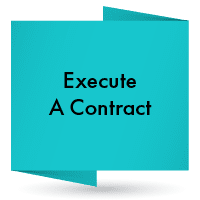

Knowing the market is the most important ingredient when setting a price and listing a home. I will bring a list of comparable homes sold within one-two miles of the listing in the last couple of months depending on the market. Setting a price is a team effort. We will decide on a price together. Being transparent, giving feedback and direction on setting a price will create a gateway to achieving selling your home for the highest value. Once a price is set, the rest of the steps with listing the home will follow the seller’s timeline.
The inspector will check that major appliances are functional, scrutinize the heating and air-conditioning system, examine the plumbing and electrical systems, and inspect in the attic and basement if accessible.
A home inspection may estimate the remaining useful life of major systems and equipment as well as that of the roof and structure. The critical information will include recommended repairs and replacements, too.

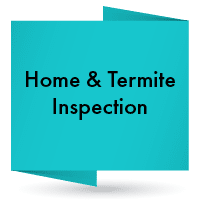
It is wise for you, the seller, to order a home and termite inspection. A home and termite inspection will cover many bases and is a more in-depth and detailed inspection of the property. A home inspection will create security when a buyer sees the home.
A good home inspection report is extensive, containing checklists, summaries, photographs, and notes. With this intention, a home inspection aims to uncover issues with the home.
The inspector will check that major appliances are functional, scrutinize the heating and air-conditioning system, examine the plumbing and electrical systems, and they will inspect in the attic and basement if accessible.
A home inspection may estimate the remaining useful life of major systems and equipment, as well as that of the roof, and structure. The critical information will include recommended repairs and replacements, too.
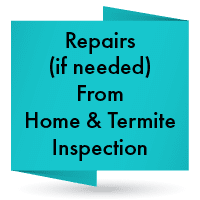
I will work with you on what repairs are beneficial for the sale or if it is better to sell “as is.” The market influences this decision, and so can mortgage loan programs. I work with a certified contractor, Leo Renovato with Renovato Builders, who is such a valuable asset in quoting repairs and helping gauge important decisions. It is possible to account for the cost of repairs at closing if necessary. Repairs are a negotiable item. The major takeaway here is that everything must be disclosed.

Virtual staging or real staging: which one is best? Have you ever been to a restaurant, and they asked if you wanted dessert? What if they asked you with a tray of dessert options in front of your eyes? You can almost salivate! The same goes with staging. When you tour an empty home, it will not give you the same experience as a staged home. It may not show you the craving or experience of wanting to live there. Virtual staging is great if physically walking the property is unavailable, but real staging is a no-brainer for selling a home. If you have furniture in the house at the time of sale, then the discussion should be about how much of your personal belongings can be stored.


A sign will be placed in your yard, window, or patio depending on your property. A sign will have my contact information and be used as a landmark for open houses and an invitation for those passing through to contact me if interested. Oftentimes a neighbor will be interested in a property near them because their current home could use more or less space and different amenities. Neighbors could also be potentially looking out for another family member and there is always a good chance that neighbors like to stay in their neighborhood.
A lockbox is placed on the property, so the key(s) to enter the property are secure. There are two types of lockboxes, and usually, both are present on the property—a conventional lockbox with a code and a Supra Key Lockbox with Bluetooth capabilities used by agents. Since agents can’t be in multiple places at once, a lockbox is a good way to let other agents bring their buyers to the property.


Post review of offers and per our conversation, I will notify the buyer’s agent of an accepted offer or counteroffer. When there’s a counteroffer, the seller or buyer needs to sign off on that counteroffer depending on who is countering. This negotiation process needs to be handled professionally, balancing other offers that could be also on the table while not getting caught in the middle of two accepted counter offers from the buying side. Until a home is contingent or pending any buyer has an opportunity to submit an offer. If a buyer drops out or contingencies are not met, the seller can move on to the second choice offer. When you decide to accept an offer, it is time to move on with the final paperwork and push the documents through the Title Company/Escrow and Mortgage Lender.
It’s important to note that sometimes we have a domino effect. For example, your buyer may need to close on their property to use the funds from their sale to close and purchase your property. It is also possible that you might need the proceeds from the sale of your property to buy your next property. That is why it is so important to be working with a tight knit realtor and lender. When we work together I will take great care to have everything go as smoothly as possible.
Each situation is unique, and there are other items that can be included in the offers you review. Examples could include the seller renting back after close, the buyer renting until closing, the negotiation of credits, seller financing, home warranties, or closing date. All of these items and more are discussed during the negotiation process of accepting an offer.

Offer accepted! It’s time to pack while the Title, Mortgage Lender, Selling Agent, and Buying Agent are working to get your paperwork in order.
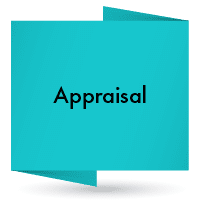
Some would call this the nerve-racking part of the home selling timeline. You have finally accepted an offer, but wait – the appraiser will need to come out to create a final appraisal report and offer their professional opinion on the home’s market value. In other words, they have considered the home’s condition, any upgrades or additions made to the property, the size of the lot, and “comps” (or recently sold properties) of comparable size and condition in the same market. The final estimation of the property’s value is based on this information. The report goes back to the buyer’s mortgage lender. This report is not given to the seller or selling agent. The buyer’s lender and buyer will view the report to make sure the property appraises for the amount of purchase. If a home appraises “as is” or over the amount that the buyer is buying the home for, the buyer will not have an adjustment in his/her mortgage loan. If a home appraises for under the agreed upon price, the buyer would be essentially overpaying for the home and would need to pay the difference to the mortgage lender.

Final paperwork could include items such as an addendum stating you fixed repairs that were requested along with the bills showing they are paid. A closing statement will be provided three-to-five days before closing. We will look this over together to make sure all of the numbers and details look correct in order to sign off with escrow and transfer the deed to the buyer.
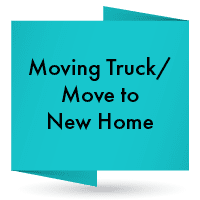

Closing might take place at the escrow company or another designated place. You will need your Driver’s license or picture ID. You also will need to be out of the property before you sign. If you’re still in the neighborhood for your escrow appointment I will attend the appointment with you and handle the exchange of all the keys, garage door openers, permits, fabs, etc. If you’re signing remotely we can set up a time to exchange these items before leaving town.

Generally, it’s important to note that it takes about 55-70 days to sell a house once a listing agreement is signed. There is usually work to be done such as cleaning, staging, photographing, and marketing. Once an offer is accepted, depending on the form of financing in place, homes can sell as short as one-two weeks with a cash offer to 30-45 days with conventional financing. Contingencies can also decipher how much time is needed to close. I will guide you through the process each step of the way.
Let Jacqueline walk you through the home selling timeline. She is experienced with the home selling process and is happy to interview for the job as your Realtor.
110 N 3rd St #20
San Jose CA 95112
License #02115987
117 Bernal Rd Suite 70-638
San Jose, CA 95119
License #01415279
Notifications
